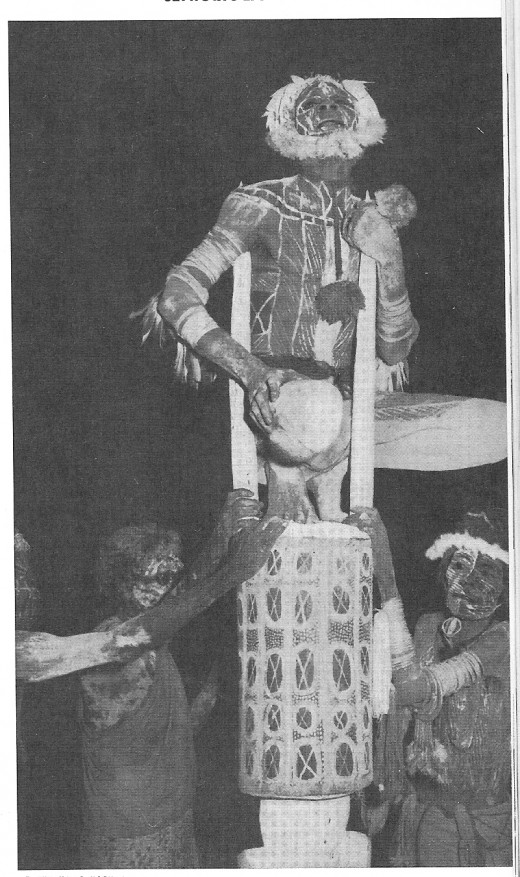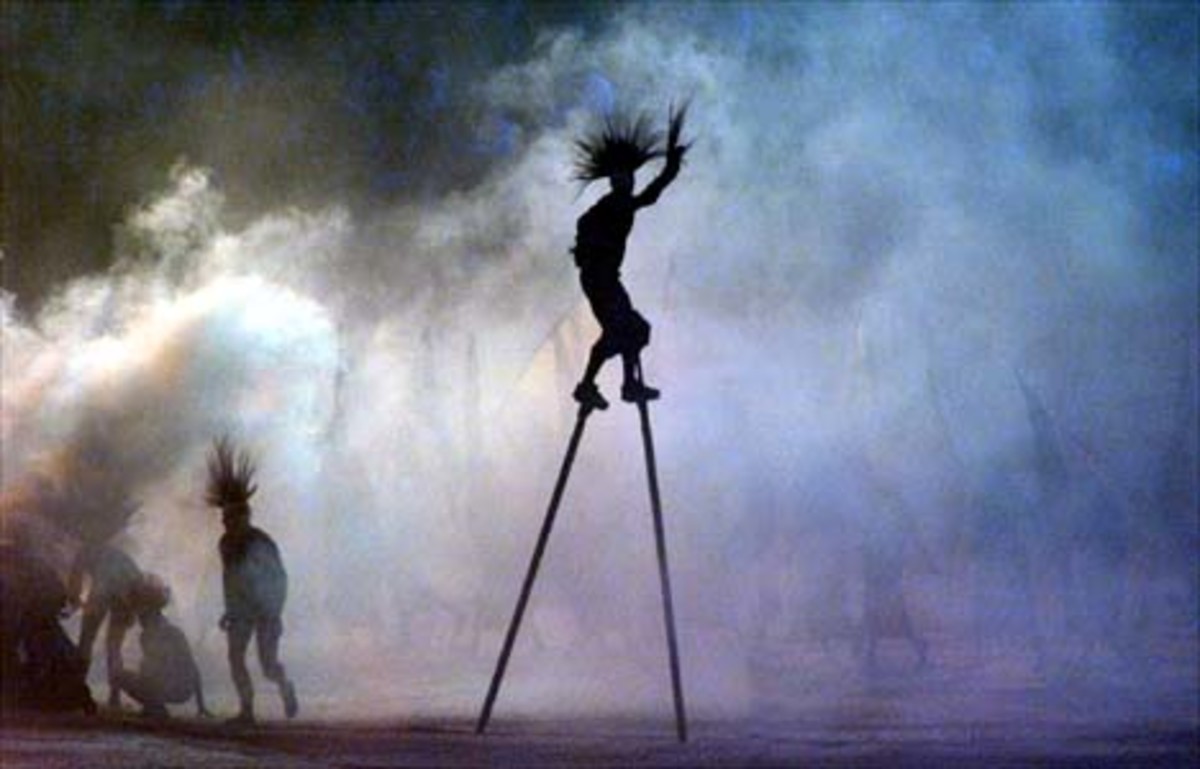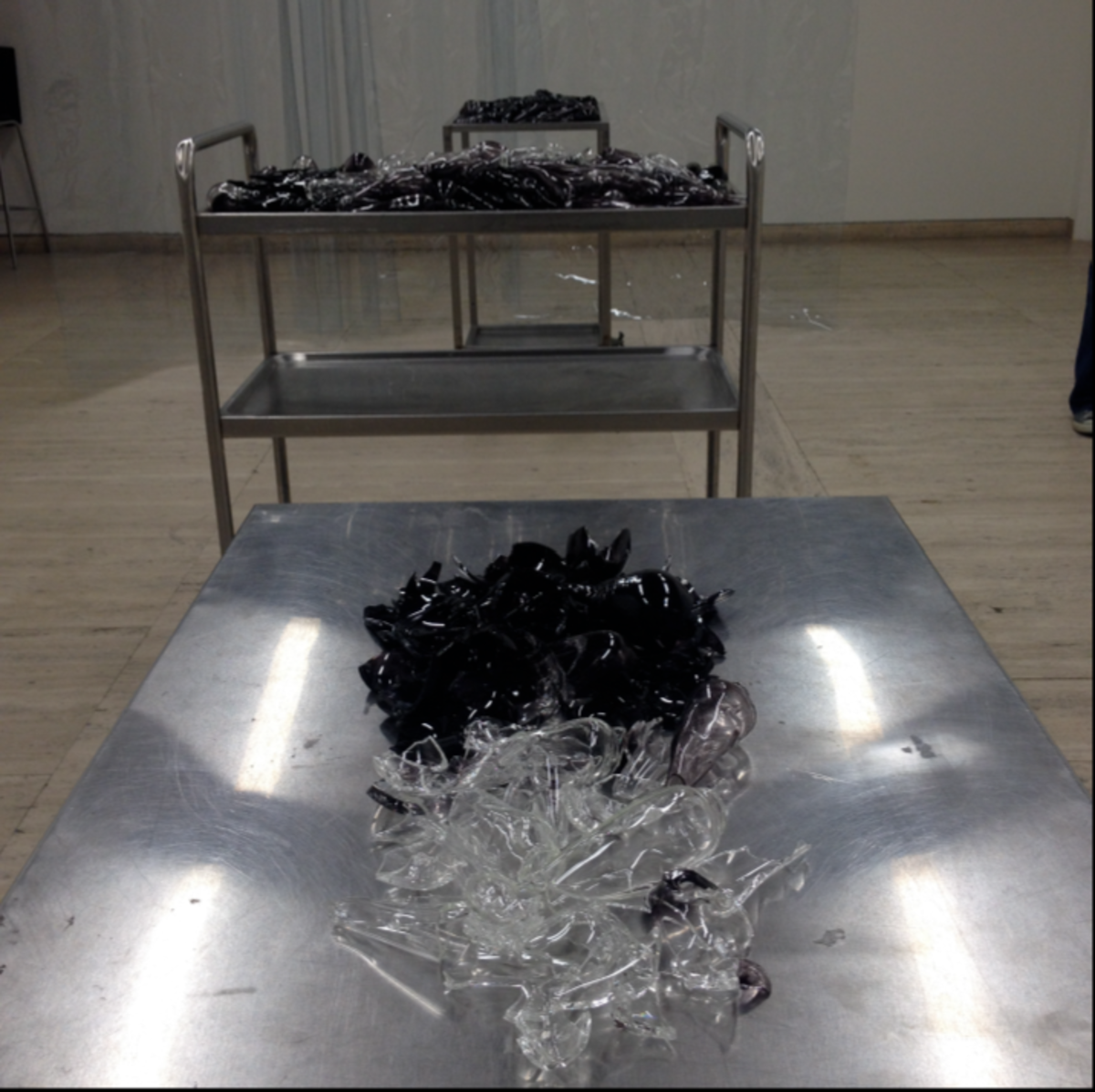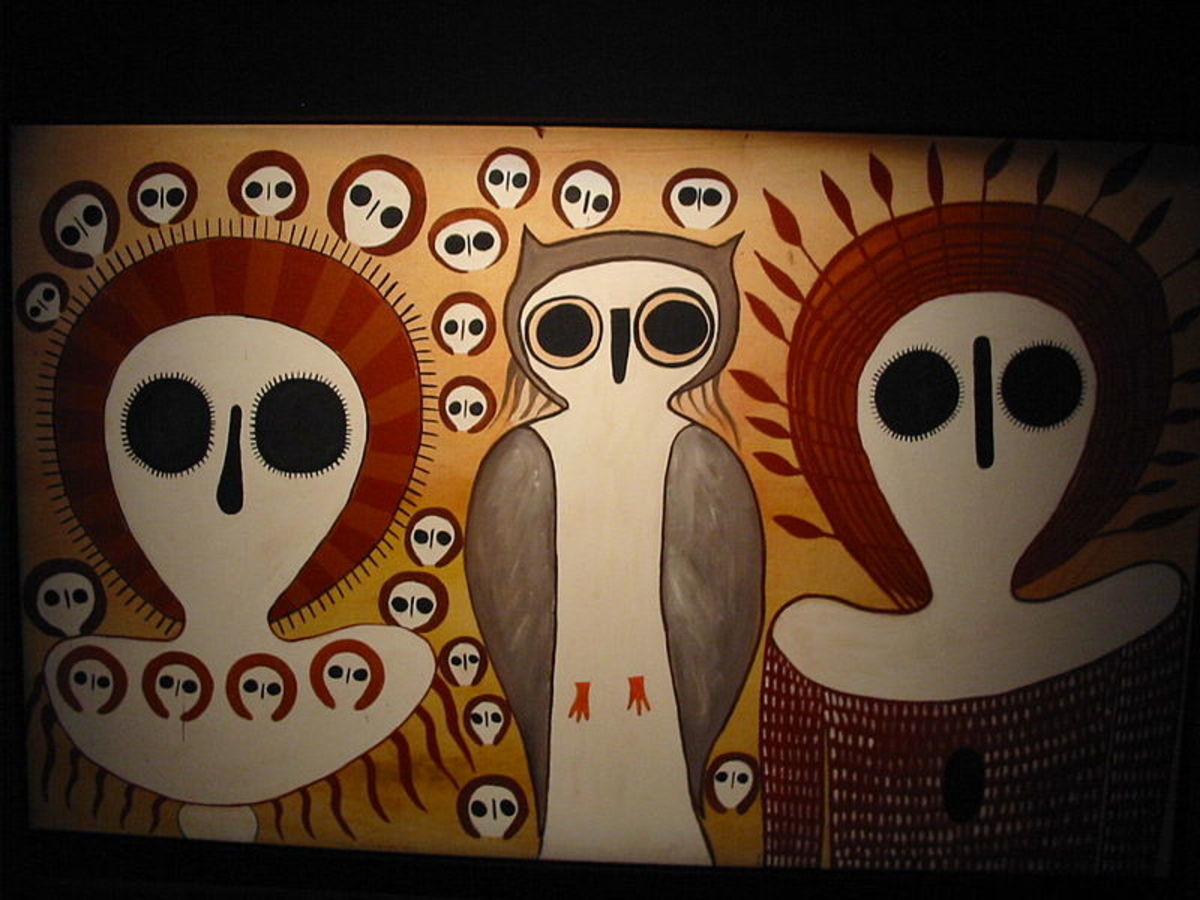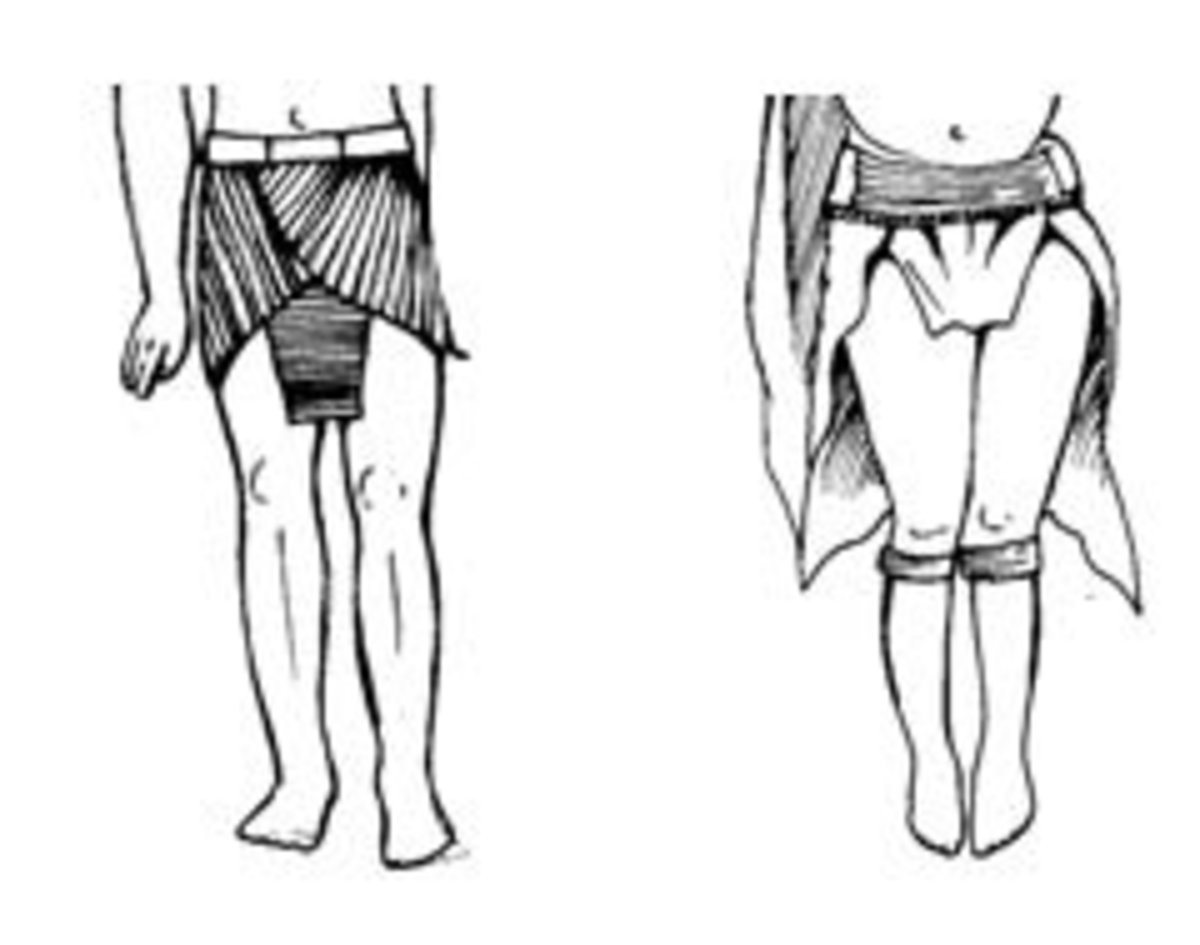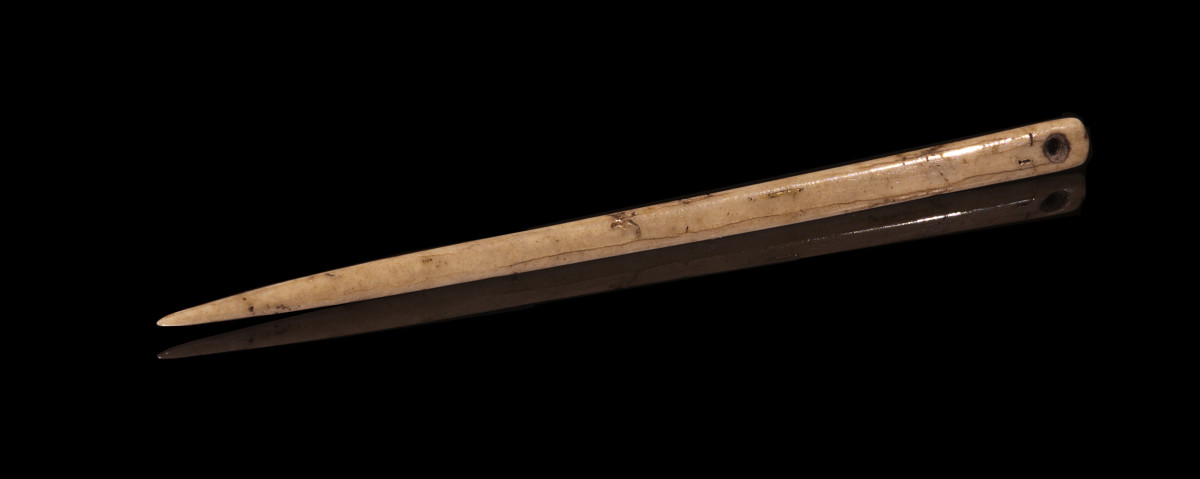The 50,000 Year Old People from the Bottom of the World
The Mystical Aboriginals
Tasmanians Settle in Australia
The triangle-shaped island south of the eastern mainland of Australia is known as Tasmania. The last pure-blooded Tasmanian died in 1876. However, many of Australia's aborigines are of Tasmanian ancestry. As the ancestral Tasmanians made their way north to Australia's mainland, their cultural imprint remained alive. Several waves of Australian blackfellows with African ancestry followed shortly after
The first inhabitants of Tasmania traveling over land sea to settle the 26,215 square mile island and the northern, eastern and southeastern coasts of Australia. These aborigines re classified as part of the Australoid subdivision of mankind. This racial type was also originally differentiated in the Malaysian region north of Australia. Australoids spread over a wide area as indigenous people of southern India, Malaysia, Australia and coastal New Guinea.
Aboriginal Settlers
These seafarers brought the dingo, a species of dog not native to Australia. They were food gatherers, hunters, fishermen and required a territory with a permanent supply of fresh water. For a time the numbers of an original aborigine group increased. This caused a limitation on food supplies and subgroups to emerge to find a new food-gathering center. Food gathering among these aborgines created a nomadic life that kept them relatively isolated.
From Subgroups to Tribes
As the subgroups became divided into 500 tribes, each tribe had its own language, dialect and territory. Each other possessed peculiarities of social organization and custom. Each tribe was identified by a single name even when subgroups continued to split off from the tribal unit. The main focal point for the tribes was usually a local watering hole where they shared common history, pre-existent cultural heritage and became a general source of life for tribesmen and their animals. These were to become ancestral mythical places where their forebears and heroes rituals, exploits and deaths occurred.
Nature, Clans and Totemism
Tribal organizations included totemism, clans and membership determined by ancestral descent. Some tribes were divided into "moieties" (halves) and others had a complex system of division into four or eight sections. These sections could also be imposed on moieties and given names, sometimes for animal species like the emu, kangaroo or duck. In turn, these became part of the group's totem. Interestingly, the group's totem was thought to be 'of the flesh" of the group and therefore, meant that two people from the same totemic group could not marry. The totemic group also did not hurt, kill or eat one's "flesh" or social totem.
Aboriginal Totemic Beliefs
If a totem appeared in an aborigines dream, it was in the "waking life" to warn of danger. It could also be a sign of a needy relation or to strengthen the relation in illness. In addition to humans in the totemic belief, each clan included other natural species, phenomena and objects. Aborigines belief the relationship to nature is the same as the relationship between men thus requiring reciprocal and expected behavior patterns. As in many totemic cultures, aboriginal totemic belief were largely patriarchal and patrilineal. Males were expected to go through a long period of rigid discipline in their adolescence.
Within the belief system of aborigines, re-enactments of acts of heroism and myths were vital, some of which were kept a secret among the clans with tribes. Dreams played an important role in the myticisms of these native people. They sought to understand the meaning of life, death, illness, accidents through chanting and the performance of certain magical rites like "pointing a bone" or hurling "invisible magic stones" in the direction of their victim.
Other More Deadly Forms of Sorcery
Although Aborigines described other more deadly forms of sorcery, they were never actually practiced. One example is extracting the "caul fat" or blood from a heart in a way that left no mark. Nor, was the victim aware of what happened until he died a few days later. When the aborigines could find no explanation for illness and death, sorcery provided a physiological theory.
The Clever Man With the Bone
Given the Aborigines strong belief in the ties between men, animals and all living things, a clever man or medicine man was charged with the duty of effecting cures. He would do this by withdrawing a bone or some other evil object. He was believed to have the ability to interpret communications from spirits of the dead. The Medicine Man could also decide blame for a death or injury usually upon the general approval of his decision by tribesmen.
The Medicine Man could perform a nocturnal dance called a "Corroboree." He painted his face with ashes and ochre to give rest to the spirits of the dead. A postulant studying to be a Medicine Man often passed through particularly terrifying initiation based on the themes of death and restoration. Initiation was followed by contact with the sky world and with the world of the spirits and the dead.
The Medicine Man also interpreted dreams and often practiced telepathy as well as mass hypnotism. Thus, the Medicine Man played an extremely important role in the lives of tribesmen.
Music and Dance of Aborigines
Another important aspect of Aboriginal life was art, music and dance as it related to their social and religious lives. A nocturnal song and dance fest took place whenever several groups camped together. Men with painted bodies danced to markedly energetic rhythms while women stood in the background moving their arms and bodies rhythmically. In Arnhem Land, the peninsula in the Northern Territory, songmen were specialists in a follow-on type of harmony with a developed fugal structure.
Rhythm was kept by beating sticks against each other or on the ground, tapping boomerangs together or hitting the things or buttocks with cupped hands. This created a unique, remarkable rhythmic control. Only one wind instrument, the didjeridu, a hollow piece of wood or bamboo 4 or 5 feet long and 1 1/2 inches in inside diameter was used. It produces only two notes, a tenth apart.
Aboriginal Art
Aboriginal art consisted of rock paintins, bark paintings, rock engravings and composite and carved wooden figures mainly for totemic and initiation rituals. All aboriginal weapons, implements and ornaments painted to ensure heroic efficiency related to the mythological period of dreaming.
Other Aboriginal Customs
In aboriginal culture, the custom of tree stage exposure is the first phase of burial, following by ritual disposal of the bones. In Arnhem Land, unique fertility-mother concepts developed in myth and ritual. Mother hero, in human form led her bands of men and women or brought their pre-existent spirits into various tribal territories. By her rituals caused natural species to appear.
Aboriginals are distinctively unique in their religious beliefs, lifestyles and strong mythical values. Though they appear to be primitive, many of the basic beliefs have proven them to be highly sophisticated in sociological survival and highly intelligent.
It can be said that a civilization of 50,000 years may, in fact, be more highly sophisticated by virtue of the ancient genome they possess. The mirror image may make their belief system appear alien to the modern world. Yet, what lies hidden in their culture may be the secret to the earliest known survival instincts and intelligent sensitivity to nature at its most basic level.
